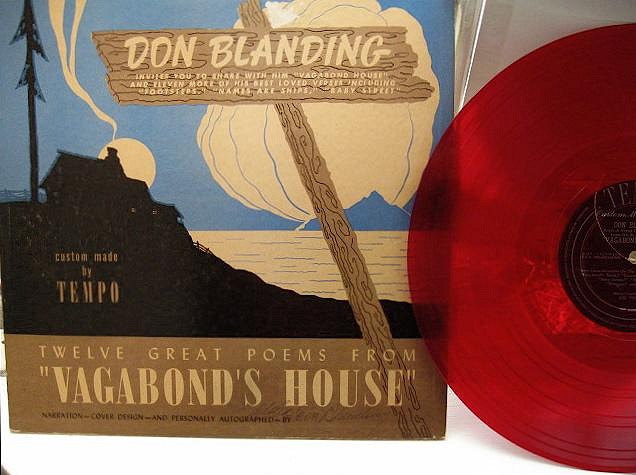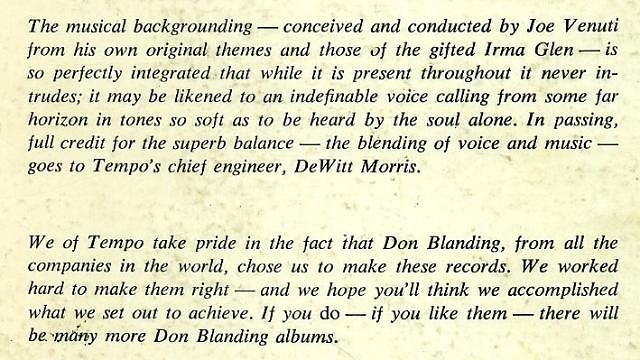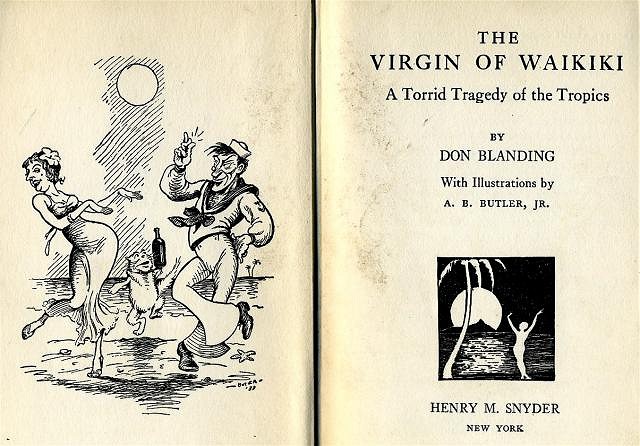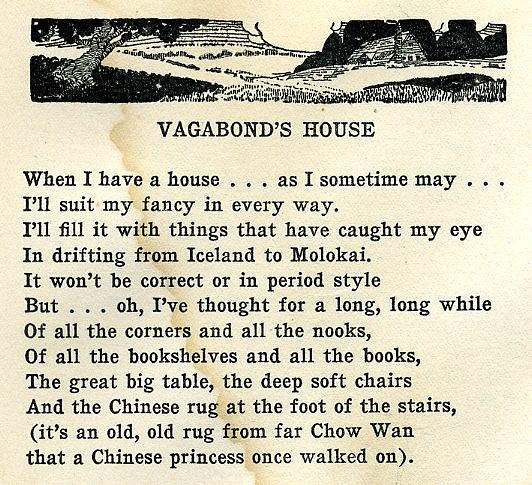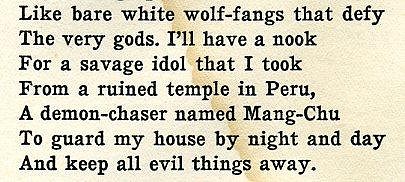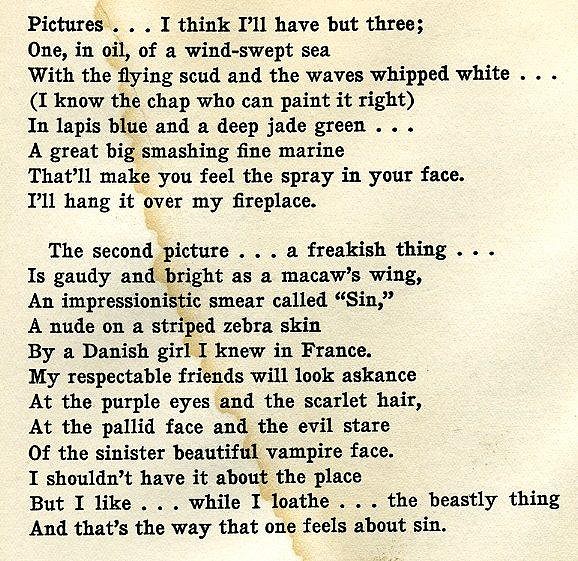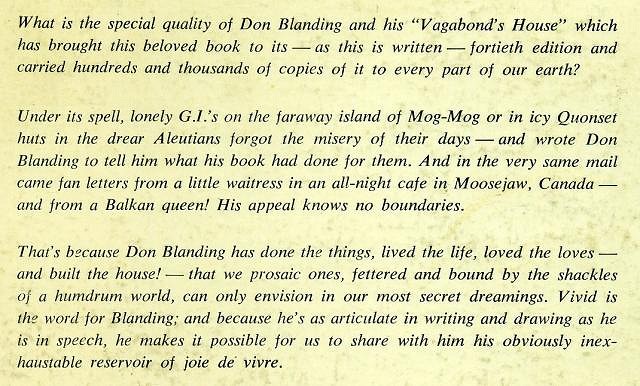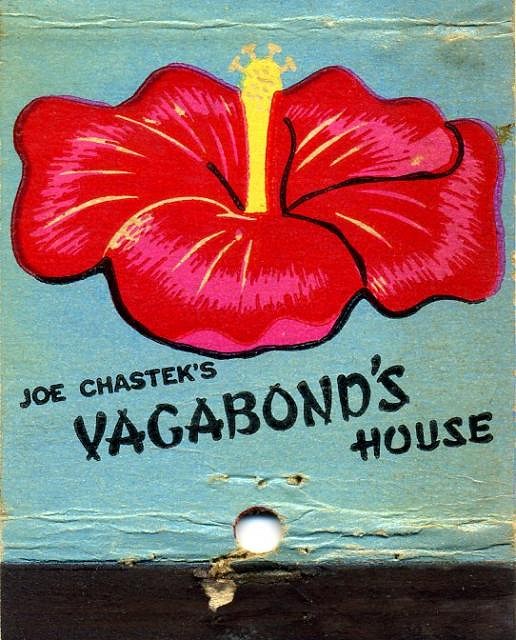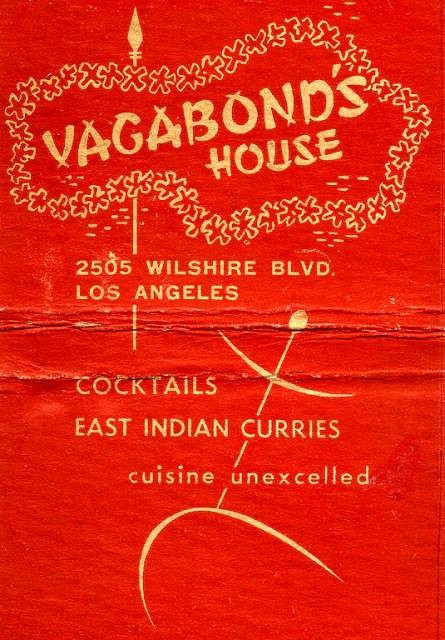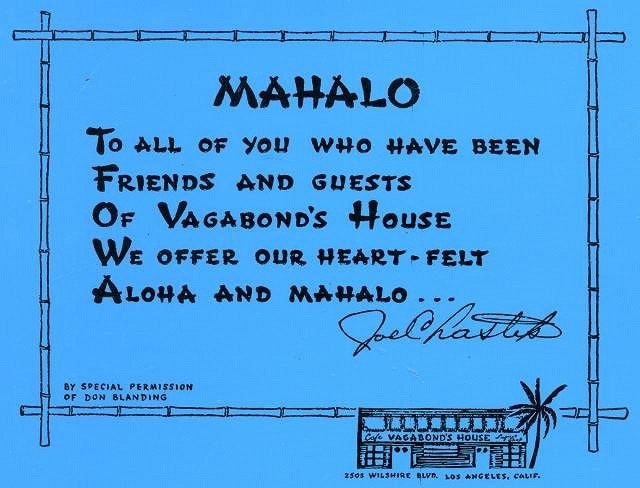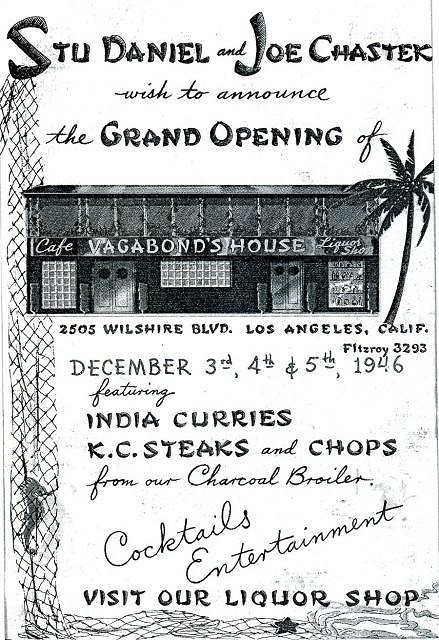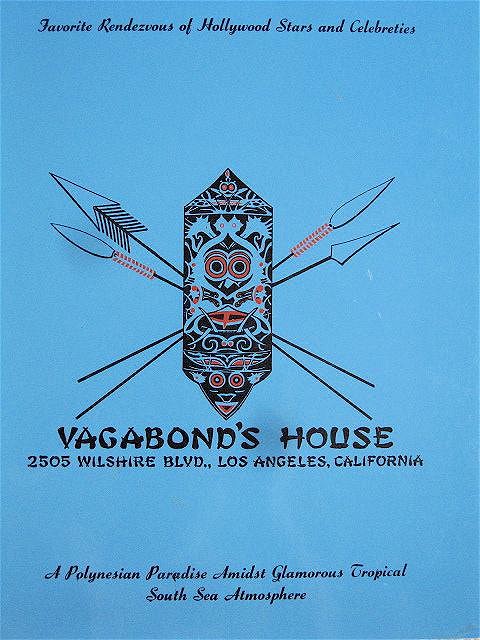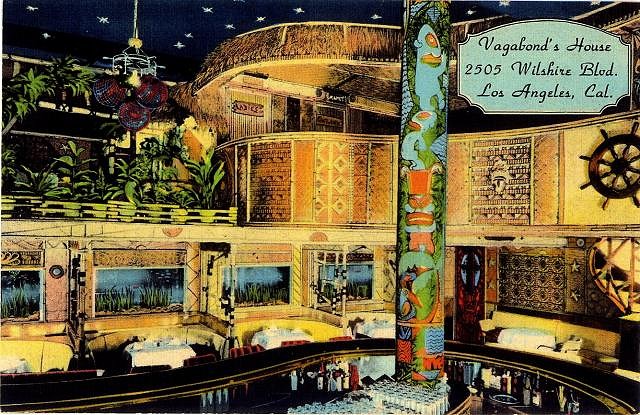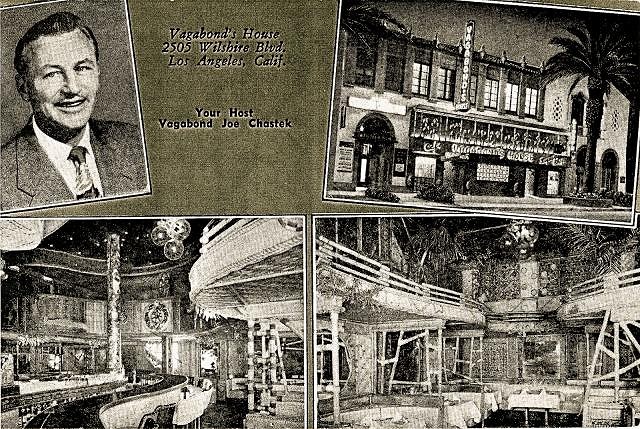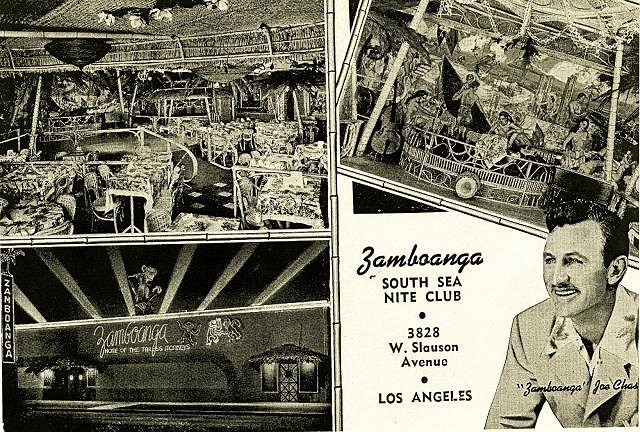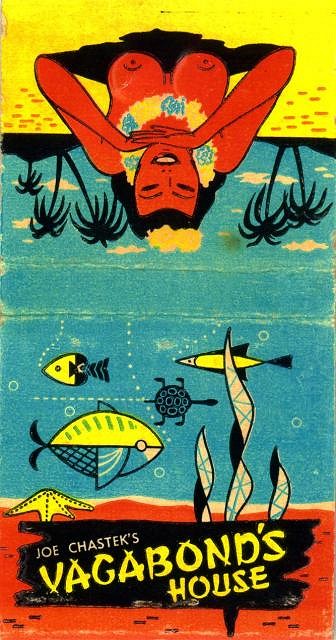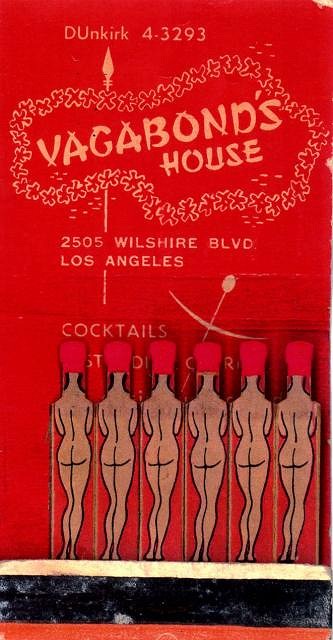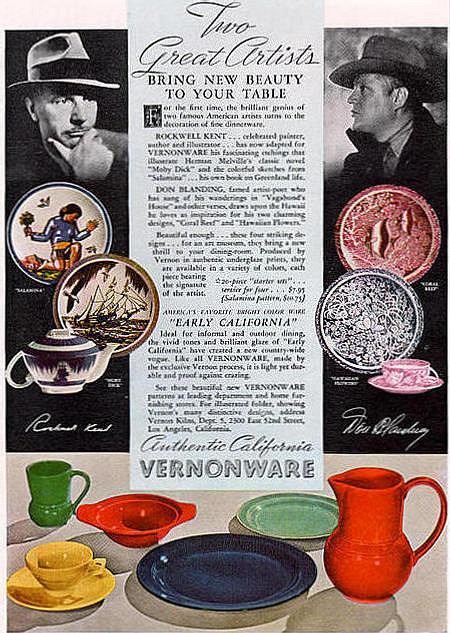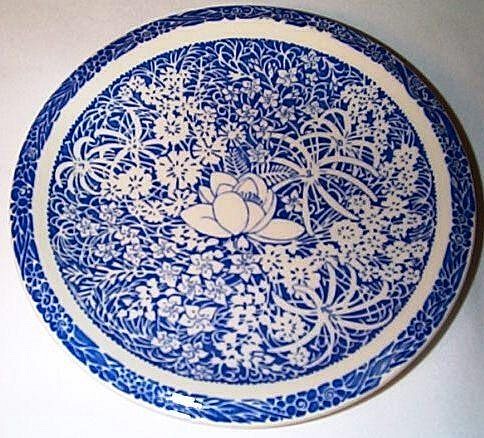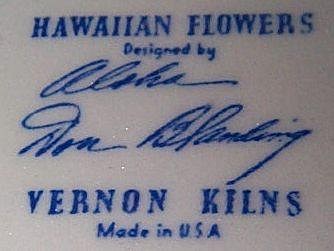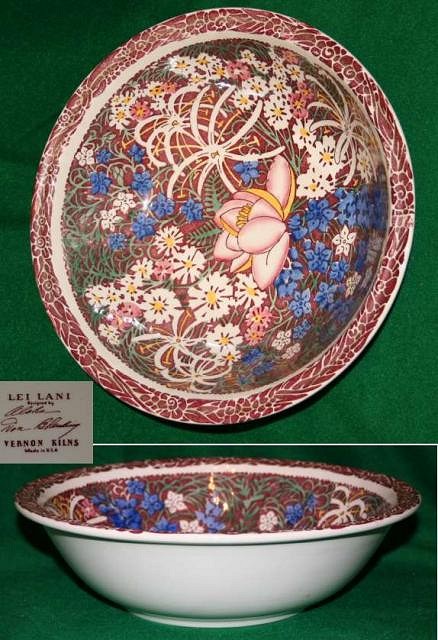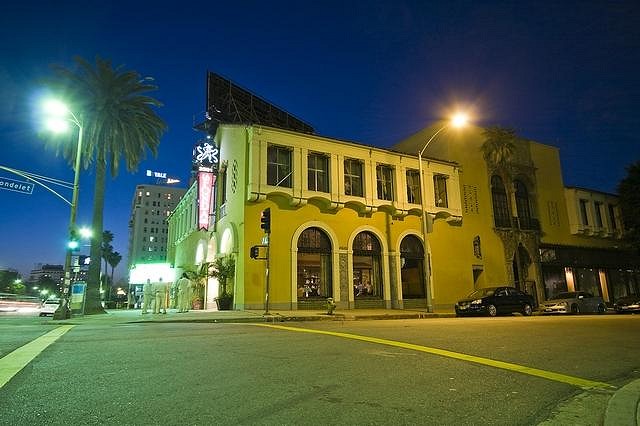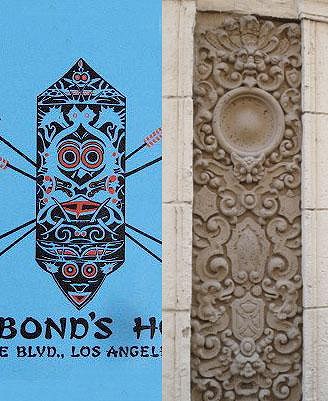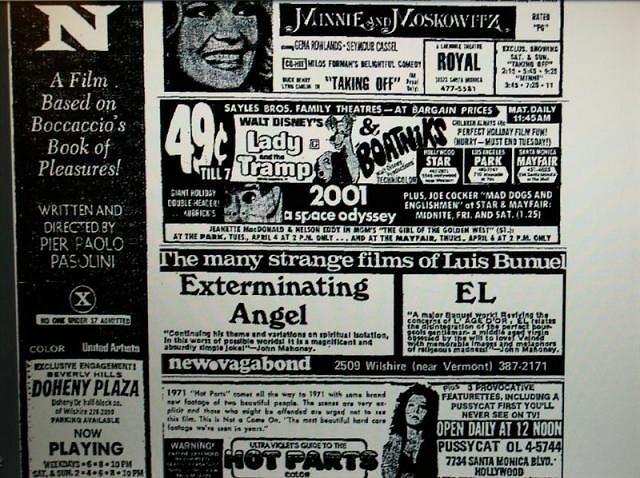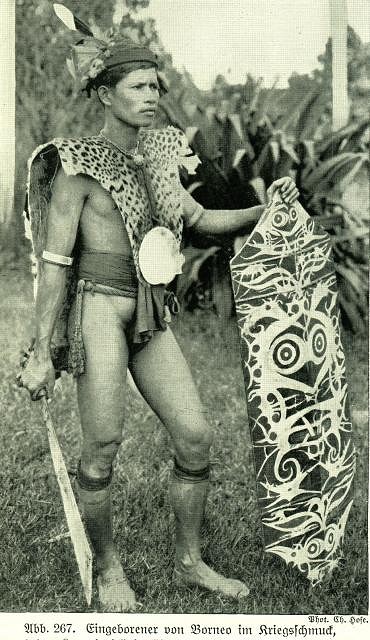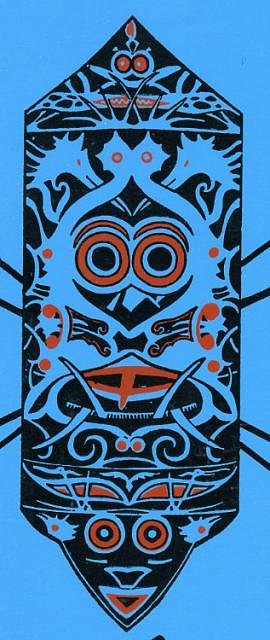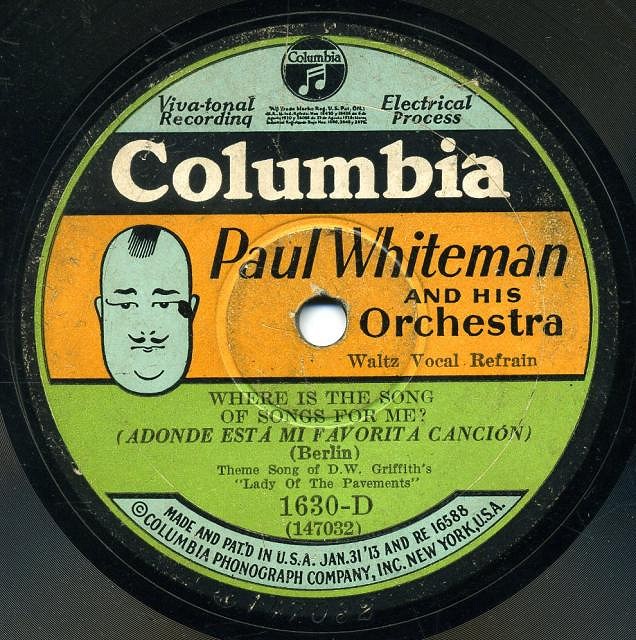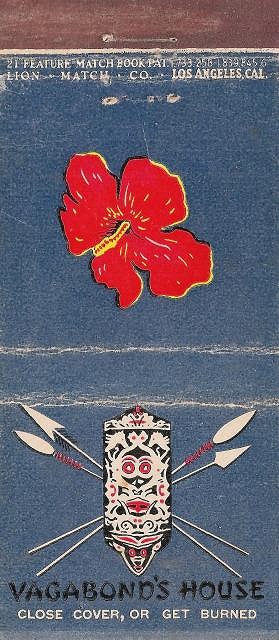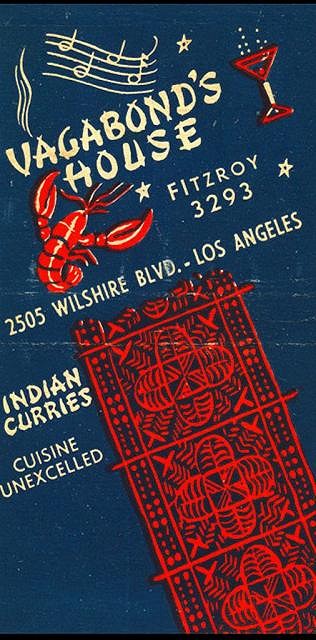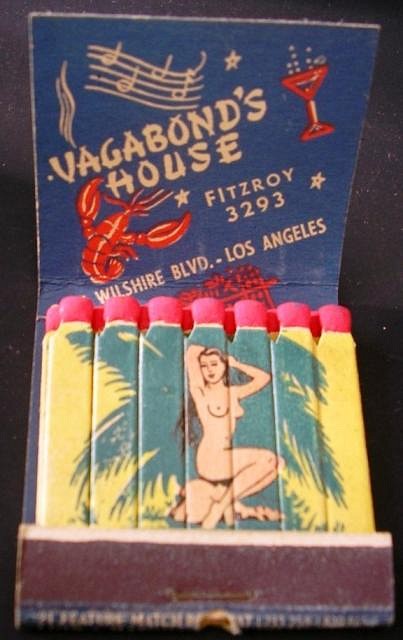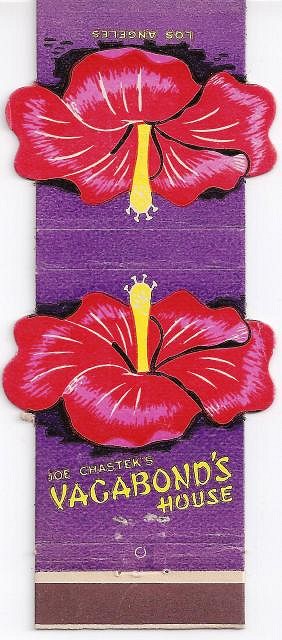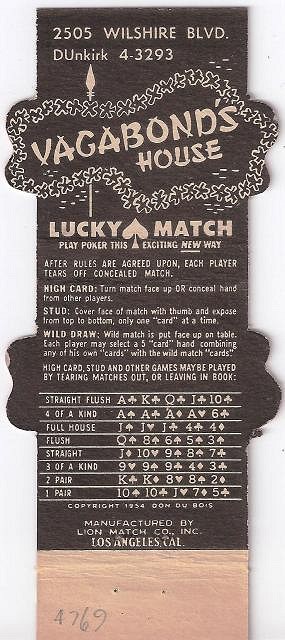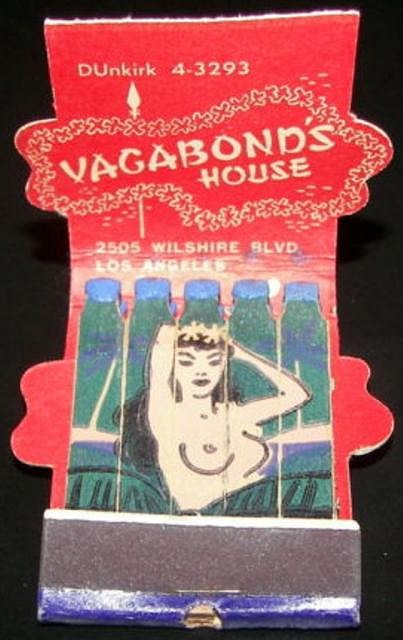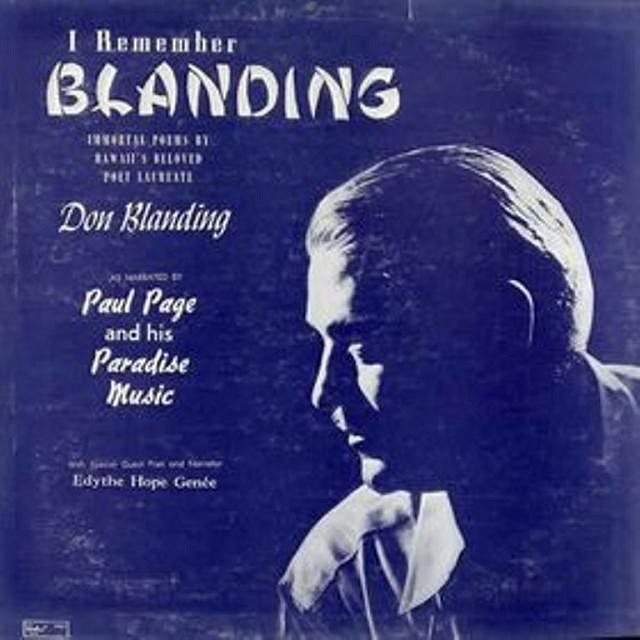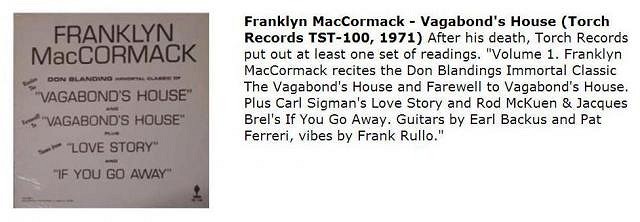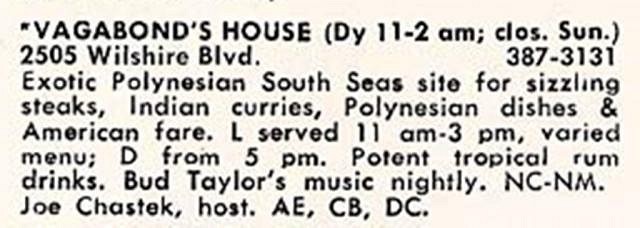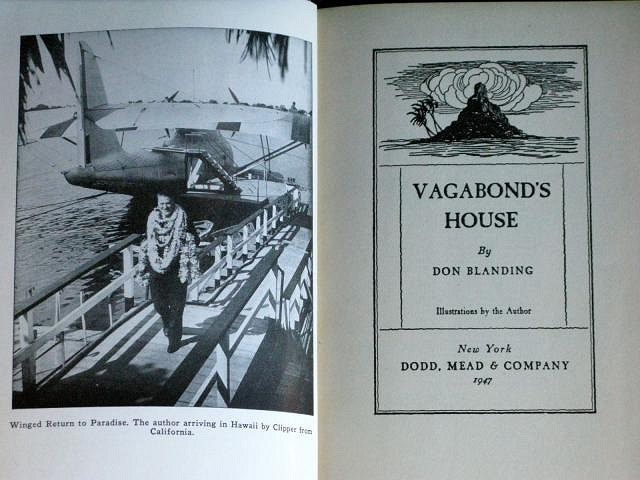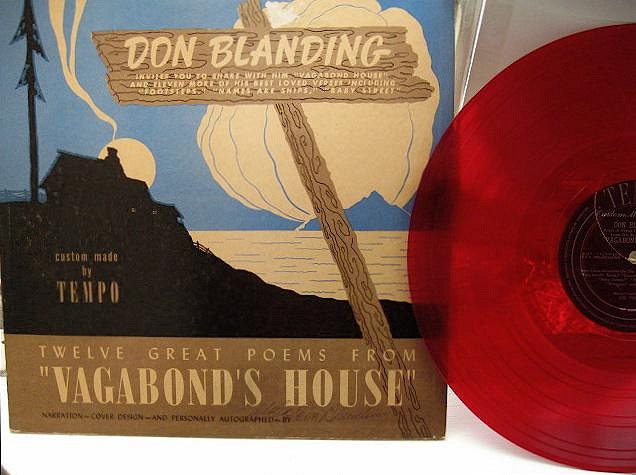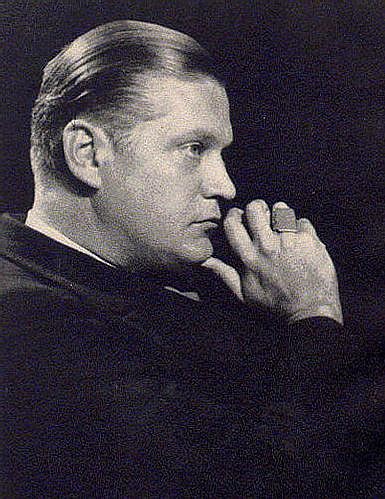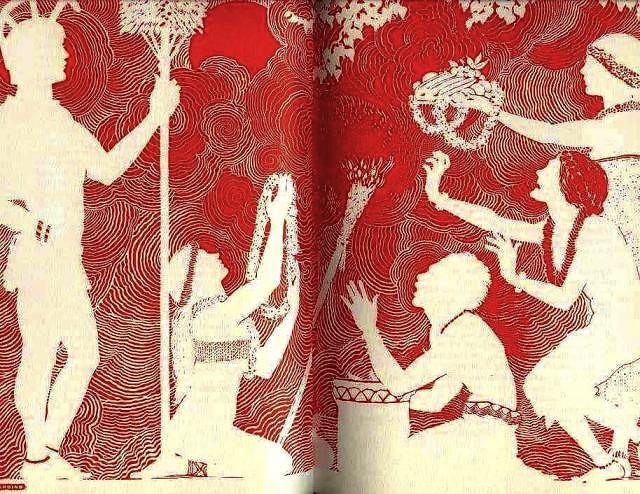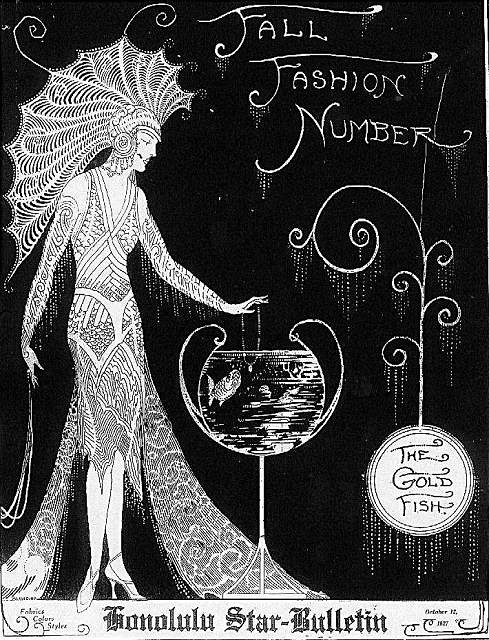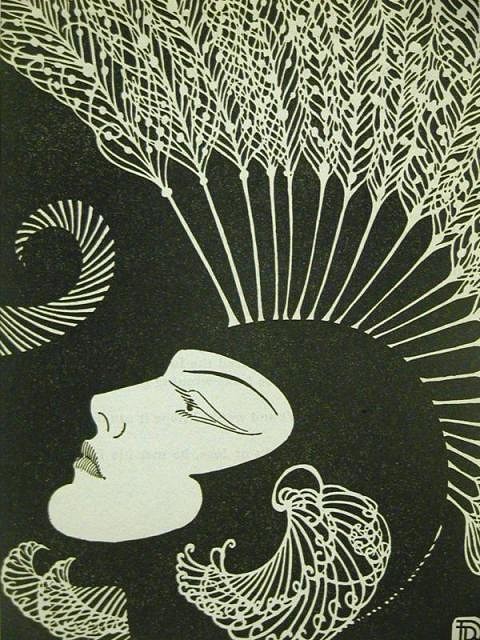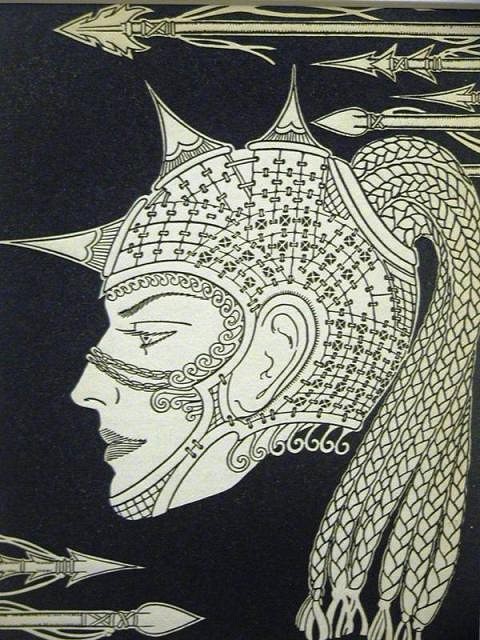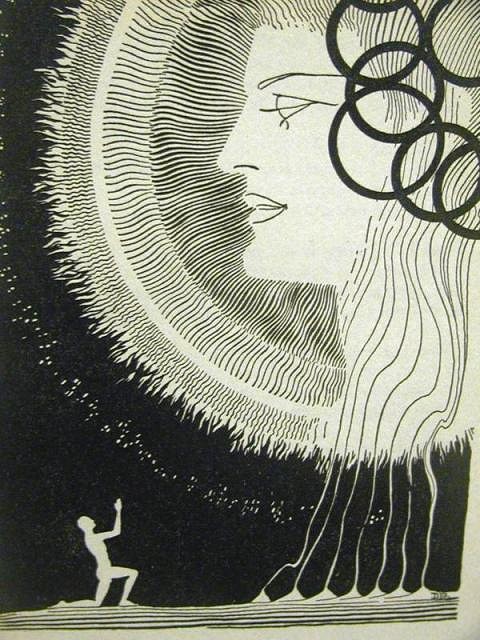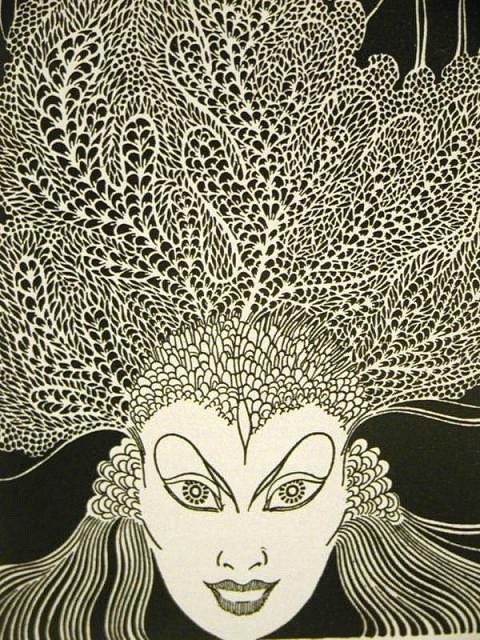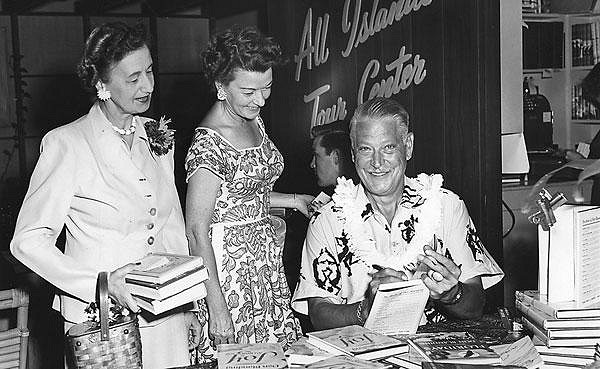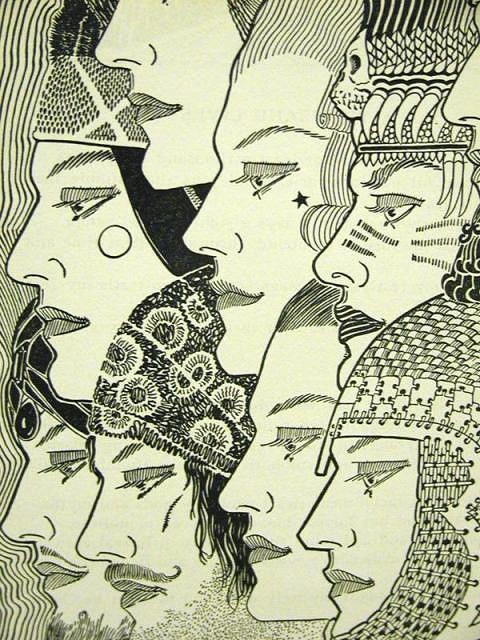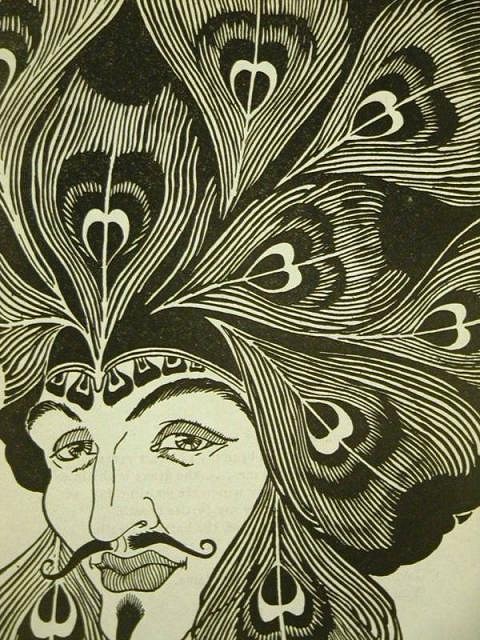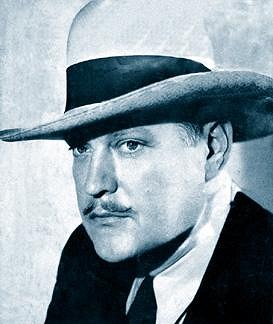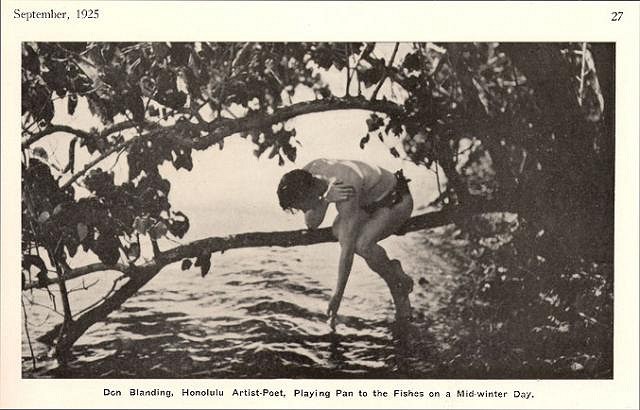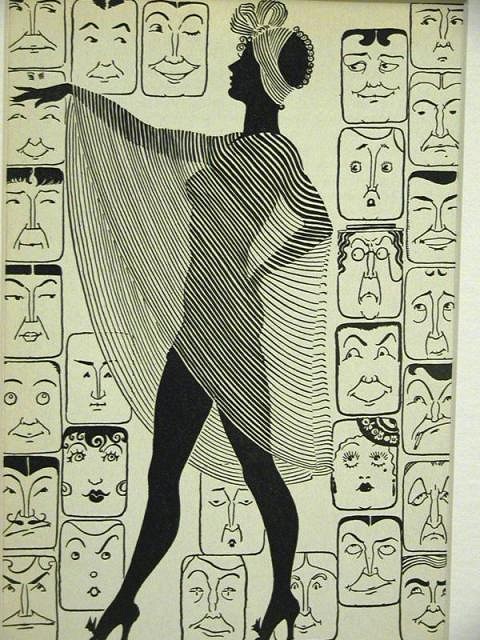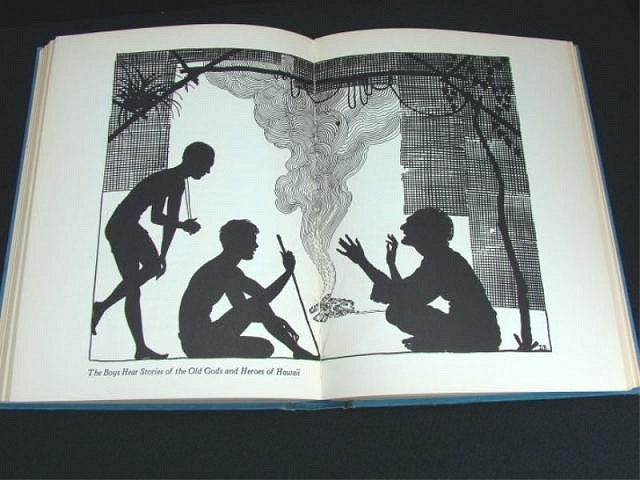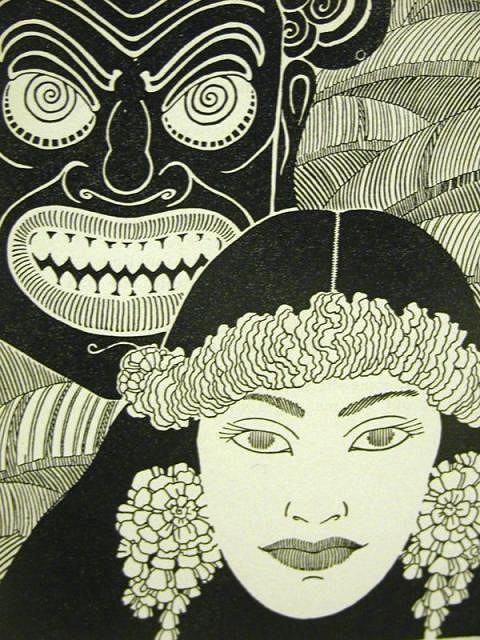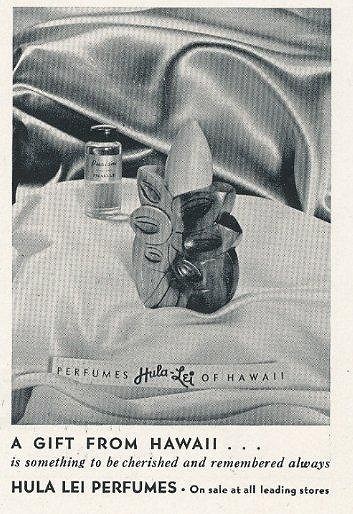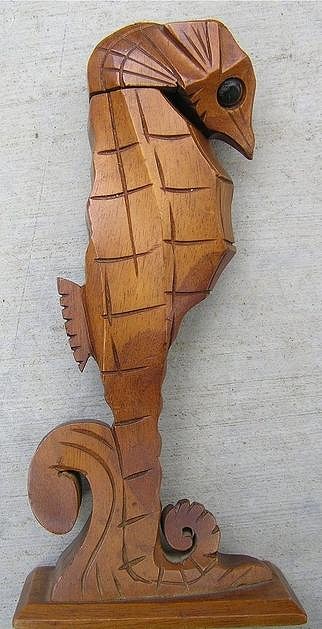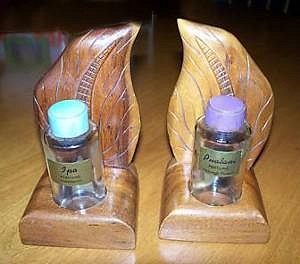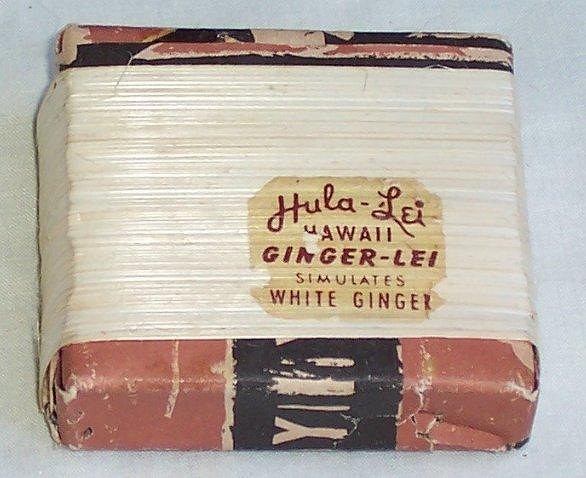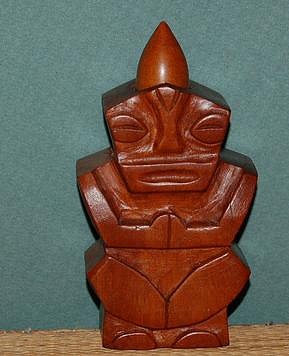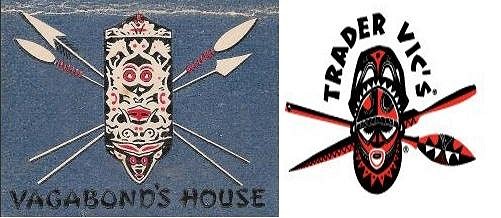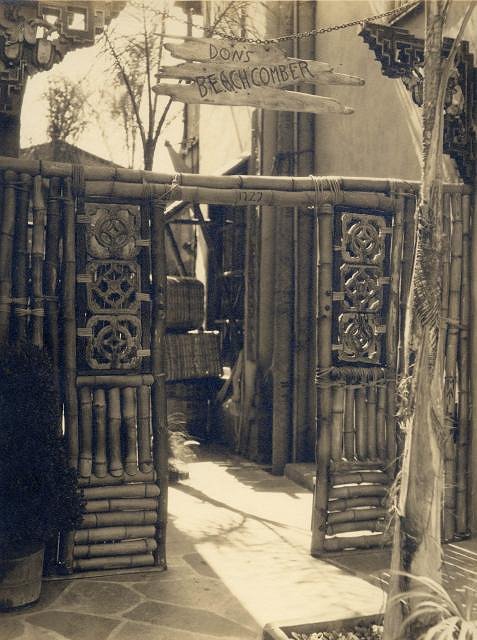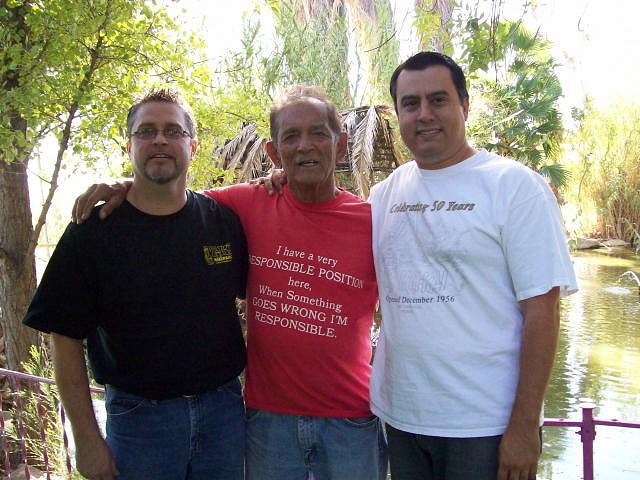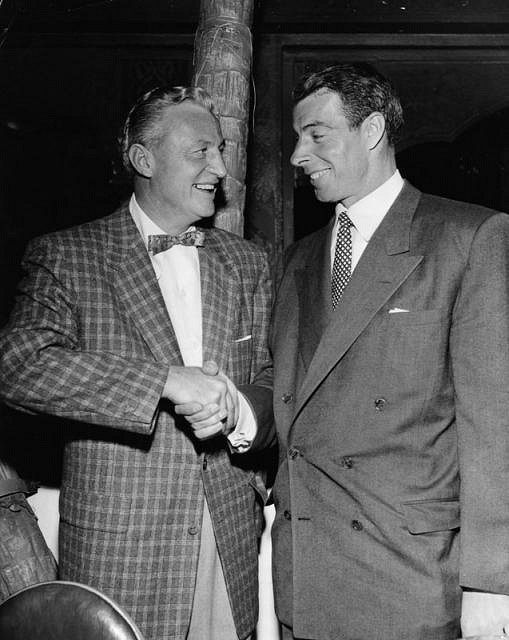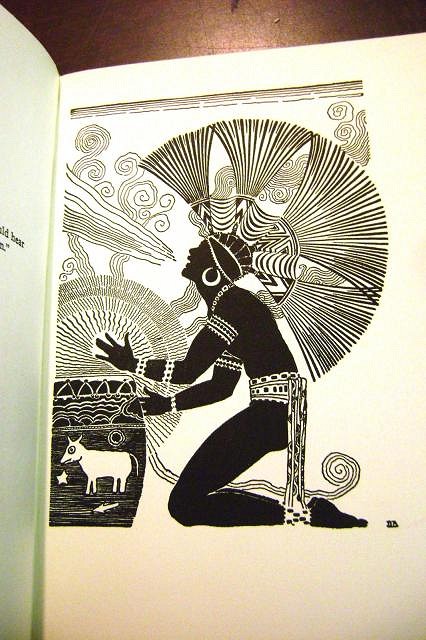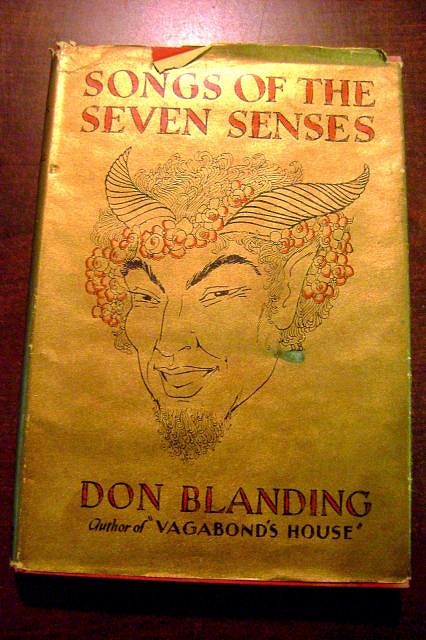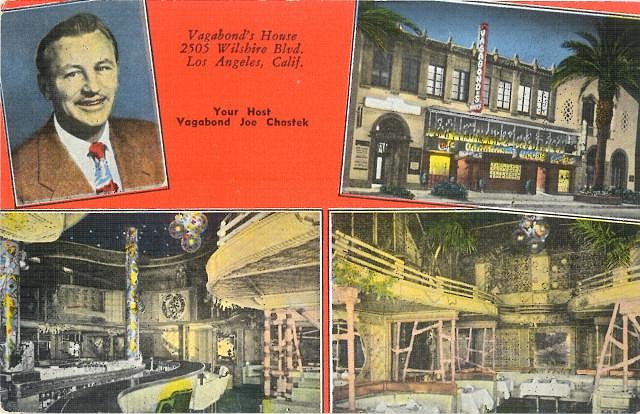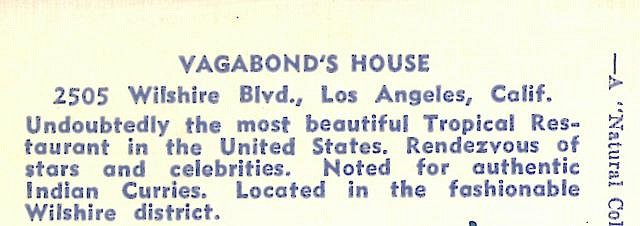Tiki Central / General Tiki
The poetry of Don Blanding / Vagabond's House
|
C
Chinarose
Posted
posted
on
Tue, Jul 8, 2008 12:46 AM
I have this childhood memory of my grandparents taking me to a recital of Don Blanding's poetry when I was about 10 years old. My grandparents lived their retirement in Hawaii, and I would usually spend several weeks of my summer vacations with them. Anyway, I remember listening to the poetry reading and wondering how it could be so boring and racist and so unintentionally hilarious at the same time. Everyone listened, smiling in respectful silence, as I looked around at the other guests to see if anyone else besides me was reacting to words like "slant-eyed chink". Now, I think I can appreciate this poetry with a sense of irony, but it seems like fans of Blanding's poetry really enjoyed it at face value. I think Blanding was going for some sort of romantic whimsy, but it just seemed childish to me. Is he truly some sort of revered artist to Hawaiians? Or just to the haoles? Or was it a generation gap that I couldn't appreciate it? [ Edited by: Bora Boris - Changed Title. - 2012-10-14 07:30 ] |
|
T

twitch
Posted
posted
on
Tue, Jul 8, 2008 11:32 AM
Probably a generation thing. I mean, look at Rod McKuen. Guy sold jillions of albums of poetry and singing along with books in the 70's, but it all comes off as Hallmark-card runoff nowadays. (I collect his stuff like mad though - I find the music and poetry albums have a car-wreck quality, but funny. Like a clown-car wreck.) |
|
V
vegasvic
Posted
posted
on
Wed, Jul 9, 2008 7:46 AM
[ Edited by: vegasvic 2008-07-09 08:14 ] |
|
M
Murph
Posted
posted
on
Wed, Jul 9, 2008 10:28 AM
|
|
C
Chinarose
Posted
posted
on
Wed, Jul 9, 2008 11:00 AM
Whoops, I just realized that I posted this in the wrong forum. I asked for it to be moved to the general forum. Twitch, I totally understand what you meant by funny "like a clown-car wreck". Vegasvic, I wish I could get my hands on that album! |
|
B
bigbrotiki
Posted
posted
on
Fri, Jul 11, 2008 1:13 PM
You and many others! That Paul Page Don Blanding tribute LP is quite a rarity. And then there is this one:
You could listen to his voice reading Vagabond's House and experience those feelings of boredom and racism all over again! :D What you wrote is a perfect example for the dated-ness of his oeuvre, he was really our GRANDparents' Polynesian pop hero, not our parents' so much anymore. His prose strikes one as corny nowadays, his humor too:
I like Twitch's comparison to Rod McKuen. Both were hugely popular among their generation, because they captured a certain Zeitgeist that people felt. They weren't accepted by the literati, but by the people, just like Tiki culture, they were POP culture. Blanding was kind of outdated by the time Tiki rode high, but he definitely prepared the soil for it. The bohemian flair of the South Seas flotsam decor of Tiki palaces and rumpus rooms was foreshadowed in his poem "Vagabond's House":
in this pages-long poem, he goes on to describe all the things from his travels he will decorate his house with:
and uses "black man" references with the casual innocence of his generation:
He even touches on my favorite subject, the relativity of "bad taste"!:
I wish I had that nude painting on my wall right now! This was the bohemian escapism that normal people, unable to go as far because they were adhering to the social rules of the time, admired and dreamed of. His prose was ideal for the armchair traveller stuck in a grey 9-5 existence. His influence lasted until WWII and after, here is a good example from the liner notes of the LP I have:
Whatta guy! The fact that he belonged to the Pre-Tiki period of Polynesian pop is underscored by the fact that his work spawned only ONE supper club, in 1946:
The owner Joe Chastek used some Polynesian references, but it seems the place was more (like the poem) general Exotica themed:
...but by the 50s it called itself a Polynesian Paradise :)
This interior of the place can also be found on page 107 of Tiki Modern (early American example of a Tiki post):
The restaurant was housed in a typical L.A. 20s Spanish revival style building, which still stands today (?):
Right next to it stands the Vagabond Theatre, a movie palace undoubtedly also inspired by Blanding's poem. After the Vagabond's House restaurant closed, it became the La Fonda Mexican restaurant, famous for its live Mariachi music. I went there before that also closed earlier this year, and the 2nd floor balcony visible in the postcard of the interior was still there (but nothing else). Of course we all know Joe Chastek as the proprietor of the Zamboanga:
which was discussed in length here on TC, in one of those fine threads that illicited owner family response!: http://www.tikicentral.com/viewtopic.php?topic=7557&forum=1&start=30 Two postcard interiors of the Zamboanga can be seen in Tiki Modern on pages 72 and 144 (thanks to Sabu and Jim Heimann) Joe Chastek is also quoted on the back of that Paul Page album above. And in closing, for everybody's enjoyment (also visible in Tiki Modern p. 327), one of those fine "embossed breast" feature match books:
..and, by the way: The collection of poems entitled "Vagabond's House", which became Don Blanding's greatest success, was first published in 1928. Don The Beachcomber opened in 1934. Has it been ascertained yet where Ernest Beaumont Gantt took his artist's name from? [ Edited by: bigbrotiki 2008-07-11 21:31 ] |
|
B
bigbrotiki
Posted
posted
on
Sun, Jul 13, 2008 12:40 AM
Boy, if Blanding was already an old hat in the Tiki period, he sure ain't moving anybody in the Tiki revival! A post about Don Blanding? YAWN!!! --Next! (And anyway, one would have to READ the excerpts, and written in prose at that...forget it!) :) But here for those who, notwithstanding important Tiki cruiser bike and Disney collectible discussions, quietly enjoy the poignancy of dated Pre-Tiki scriptures, two more telling quotes from "Vagabond's House:
...and this little, oh so politically incorrect verse which was quoted in the first post above:
So is this were future Polynesian restaurant proprietors got their idea for hired help from? :D [ Edited by: bigbrotiki 2008-07-13 10:09 ] |
|
K
Koolau
Posted
posted
on
Sun, Jul 13, 2008 2:18 AM
Sven - Don Blanding also contributed Hawaiian floral designs for a line of pre-war dinnerware from Vernon Kilns:
I'm a long-time Vernon Kilns accumulator, but I only have a couple pieces of "Hawaiian Flowers". It's quite busy, and doesn't seem very Hawaiian to modern eyes - maybe a lot like his poetry. Here's some photos pinched from eBay:
|
|
B
bigbrotiki
Posted
posted
on
Sun, Jul 13, 2008 10:20 AM
...and his work for Vernon Kilns eventually lead to him designing several Aloha shirt lines, as can be seen in the "Aloha Shirts" link on http://www.donblanding.com |
|
BB
Bora Boris
Posted
posted
on
Sun, Jul 13, 2008 11:16 AM
Excellent thread!
|
|
B
bigbrotiki
Posted
posted
on
Sun, Jul 13, 2008 12:10 PM
Great. I need to get a shot of that old neon Vagabond Theatre marquee that one can see lit up in the background. |
|
T
Thomas
Posted
posted
on
Mon, Jul 14, 2008 1:36 AM
I like Blanding like I like Charlie Chan. And I like Charlie Chan a lot. My wife and I both do, though the racial stereotyping has all the subtlety of an anvil. I think the overtness of it defangs it to a large extent. Whereas when it is encoded and indirect, it often amounts to plausibly deniable malice and is thus both mean and cowardly. For example, the ditty about "Zamboanga" seems cute and harmless, but (call me slow on the uptake...) only much later did I "get" the chauvinistic dig: "...where the monkeys have no tails" is a jarringly racist putdown of people far away and of another color; I can't but see malice there. In contrast, Blanding's "political incorrectness," like the ridiculous caricaturing seen in material like the Charlie Chan movies, seems like a pretty harmless, even amusing, relic. |
|
B
bigbrotiki
Posted
posted
on
Mon, Jul 14, 2008 5:06 PM
I agree, especially because his and the Tiki generation's "racism" was grounded in a fascination and LOVE for the exotic, and any chauvinism was unintentional. But to not let this thread go out on a "racism or not" note, my main point about my initial post was that, no matter how passe Blanding's work seemed by the 60s and 70s, his "Vagabond's House" was the predecessor and paved the way to the "Beachcomber" and "Trader" esthetic that became so successful after him. |
|
K
Koolau
Posted
posted
on
Mon, Jul 14, 2008 10:42 PM
It's fascinating to find these type of people who were well known, productive and influential in their day, and are now all but forgotten (see bandleader Paul Whiteman). By the way, Sven missed a dash in the website link above - the Blanding website is http://www.don-blanding.com/. Very nice website - I wish there were more images of his Hawaiian pen-and-ink drawings. |
|
BB
Bora Boris
Posted
posted
on
Tue, Jul 15, 2008 6:58 AM
I went by the other day and took a few pictures. I didn't notice this at first but it looks like they tried to incorporate some of the outside design elements into their 1950's logo. The building is covered in these guys.
Bigbro, the marquee no longer says Vagabond Theater it is now called the Hayworth Theater. |
|
B
bigbrotiki
Posted
posted
on
Tue, Jul 15, 2008 11:08 AM
Thank you, Boris, you are a dedicated urban archeologist!
Here's a quote from a patron of that period: Nice try with the facade-to-menu comparison, Boris, but the whole building housing the theater and the restaurant was built in the so-called ornate Churri#@$%&e (!) style, as it states here!: "The Vagabond/Hayworth Theater (designated in 1983 as Los Angeles Historic Cultural Monument 268) is representative of the Spanish Colonial Revival style, also called the ornate Churriqueresque style. The building was designed in 1926 by noted architect Stiles O. Clements, a major Los Angeles figure, who designed about 100 buildings along Wilshire Blvd." ...while the illustration on the menu clearly depicts the traditional shield of a Dayak warrior from Malaysia, Borneo:
Now you should have known that! :D The choice of this logo is further proof that the restaurant subscribed to a broader Seven Seas/Ports of Call/Exotica concept (just like the poem) rather than being strictly Polynesian....(or, that owner and customers really did not care or notice :D )
Now here's a snag: If the Vagabond THEATRE opened in 1926, but Blanding's book was not published before 1928, how could it have been named after it? Here is my urban archeology theory: ...and last not least, a little off-topic:
Forgotten by many, but not by all:
[ Edited by: bigbrotiki 2008-07-15 11:45 ] |
|
BB
Bora Boris
Posted
posted
on
Tue, Jul 15, 2008 11:27 AM
Ha Ha Oops! I thought the little guy on top of the shield was an Owl so I was working off of that. |
|
C
congawa
Posted
posted
on
Wed, Aug 20, 2008 12:16 PM
I bought "Tiki Modern" at Sven's signing at the Oasis this weekend. Besides being blown away by a what tremendous work of art overall the book is, I was pleased to see the matchbook from Joe Chastek's Vagabond's House, since my mother--who used to collect matchbooks in the 1950's and 1960's (I now have her collection)--has two books from Vagabond's House (she wasn't a smoker, so all the naked lady matches are intact). (Her collection also includes books from the Luau, Seven Seas, Outrigger, and other tiki restaurants--at some point I may try to scan some of them and post them). I knew the address was on Wilshire, but until reading this I didn't put two and two together and realize the Vagabond's House became La Fonda, the famous mariachi HQ next to the Vagabond Theater (in the same 20's Spanish revival building). I used to go to the Vagabond Theater frequently when it was still going (it was the place to see 1930's/1940's revival films in the 1980's). Anyway, I just searched the LA Times historical database for those addresses, 2505 and 2509 Wilshire Blvd., and here's what I discovered as far as previous history of that locale. For 2505 (future Vagabond's House/LA Fonda), in 1928-29, it was the Annabelle Lee Hat Shop. Later on in the late 30's/early 40's, it may have been some kind of insurance office. As for 2509 (Vagabond Theater, now Hayworth), in 1926 the address was headquarters for the Meglin Kiddies professional school for performing children. In 1927, the address was a photo studio. In 1932-33, it was the Martini Grill. About 1946, 2505 became the Masque Theater, a live theater--Eva Gabor was starring in a play there then. Then in May 1950, the grand opening of the Vagabond Theater was announced, so it definitely followed Vagabond's House in having that name (if 1946 is the verified opening date). This architectural rendering was published on May 21, 1950. You can see just part of the Vagabond's House restaurant on the right:
If you look at the early photo of the front of the Vagabond's House, the entrance at the left is the entrance that became the Vagabond/Hayworth Theater (which you can see on Google maps street view). It's still not clear when 2509 became a full fledged theater, though the presence of Meglin seems to suggest it may have indeed been one from the beginning. Brent |
|
C
congawa
Posted
posted
on
Wed, Aug 20, 2008 12:32 PM
After I posted this, I realized the photo caption give the Vagabond address as 2511 rather than 2509. I seem to remember that there was some kind of little store front next to the theater, but apparently eventually became the address for the whole thing. Looking up 2511 in the Times, in the late Twenties to early Thirties it was the Institute of Religious Science (where a lot of religious lectures took place), then in the late Thirties/early Forties it was the Jean Carol Studio of Costume Design. |
|
B
bigbrotiki
Posted
posted
on
Thu, Aug 21, 2008 8:12 AM
'Preciate the thorough research, Congawa! That's a lot of different incarnations both places went through, sounds like a history of LA in a nut shell (a 1920s kids acting school, an Institute of Religious Science, etc.), wish I had a time machine. That rendering is great, now we know that it was clearly named after the restaurant and thus after the Blanding poem. |
|
D
Dustycajun
Posted
posted
on
Thu, Mar 8, 2012 1:14 PM
Time to bump this beauty of a thread. I have this matchbook from the Vagabond's House and have never seen the feature matchsticks...
until This intact matchbook showed up on ebay.
Ooo La La. DC |
|
PG
Professor G
Posted
posted
on
Thu, Mar 8, 2012 6:28 PM
That is a great thread with a little something for everybody. I appreciate you giving it the bump, DC. I wish I knew a place were I could get Indian Curries and KC Steaks. Thanks again. |
|
D
Dustycajun
Posted
posted
on
Tue, Mar 13, 2012 12:28 PM
I picked up one of the great Hibiscus die-cut matchbooks from the Vagabond's House.
The inside cover is kind of cool with a poker game you could play using the matchbooks.
I also saw a different version of this matchbook with another great feature nude.
In doing a little more research on Don Blanding I found an image of the Paul Page album dedicated to Don Blanding that has disappeared from the beginning of this thread.
There was also another album that was recorded by Franklyn Mac Cormack reading Blanding's The Vagabonds House and Farewell to Vagabond's House poems.
And finally an old restaurant guide ad.
DC |
|
B
bigbrotiki
Posted
posted
on
Tue, Mar 13, 2012 12:44 PM
Here's one of my favorite images of Don arriving in Hawaii in style :)
This photo graced several of the later editions of his various books. [ Edited by: bigbrotiki 2012-03-13 12:45 ] |
|
PR
Phillip Roberts
Posted
posted
on
Tue, May 1, 2012 10:41 AM
Aloha, Thanks Don Blanding! Waikiki Tiki; Art, History, and Photographs. [ Edited by: Phillip Roberts 2012-05-01 10:42 ] |
|
T
Tangaroa-Ru
Posted
posted
on
Sun, Jul 15, 2012 4:12 PM
I'm happy to see a few more people noticing Blanding's contribution to Tiki culture and style, and I'd like to further bump this thread! I grew up with Blanding's writings. My grandmother had all his books, and my mother often recited his poems to me. (She still does. Awww...) Blanding's "Stowaways In Paradise" was one of the first books I read as a child, and I have no doubt that that novel, along with many of his poems, influenced my love for all things exotic and tropical. The fact that I read his books while lazing about in my grandparent's Los Angeles "lanai", complete with Tiki gods, seashells and hanging fuschia plants, upped the impact of his writing on me, no doubt. I find it fortuitous and a bit cosmic that I met the future Editor-In-Chief of Tiki Magazine (Nick Camara) over a stack of Don Blanding books at a Hawaiiana collectibles show in Redondo Beach in 2002. (No, surely not! No one was even alive back then!) Anyway, I'm now happy to say that I'm finally getting to write about Don Blanding for the upcoming issue of Tiki Magazine. I have appreciated this thread (THANK YOU, SVEN!) very much to help my research. Aloha to all you fellow Vagabonds! |
|
B
bongofury
Posted
posted
on
Sun, Jul 15, 2012 6:41 PM
I am a big fan of his books and drawings. If anyone has a copy of the Paul Page or Franklyn MacCormack lps I would love to get a copy. Here is a short clip from the 1934 movie "Song Of The Islands" not to be confused with the 1942 Betty Grable version. Don Blanding narrates the rare 40 minute color film... http://www.youtube.com/watch?v=l5A5irc8dWU Ask Swanky about the Mai Kai connection to the film |
|
T
Tangaroa-Ru
Posted
posted
on
Sun, Jul 15, 2012 7:02 PM
Thank you, Bongofury! I have seen this clip before, but not the whole film. Gee, I wonder if I know anyone who might have a copy I could watch sometime!? |
|
V

virani
Posted
posted
on
Wed, Aug 29, 2012 10:42 AM
Thank you sven, and Karen for the article in tiki magazine. i really enjoyed it a lot. I had no idea who he was (yes, it means I'm not a very good studeent !). |
|
FT
forgotten tikiman
Posted
posted
on
Sat, Sep 1, 2012 10:17 AM
Great article about Blanding in the new issue of Tiki Magazine. I never knew about him but I am glad to know about him now and to be enlightend about his work and poetry in the pre-Tiki era. :) |
|
B
bigbrotiki
Posted
posted
on
Sun, Sep 2, 2012 9:33 AM
I am very glad Kari (here Tangaroa-Ru) got to write an article about Don for Tiki Mag. So what do you folks think about my theory put forth in it that a certain Ernest Beaumont Gantt chose the name for his character and the look of his bar from "Vagabond's House" and its author !?
I also have another theory about Don No 1... [ Edited by: bigbrotiki 2012-09-02 09:41 ] |
|
V

virani
Posted
posted
on
Sat, Sep 22, 2012 5:29 AM
What's the theory about the Don 1 ? |
|
B
bigbrotiki
Posted
posted
on
Sun, Sep 23, 2012 5:56 PM
I have it also on CD - but at home, sorry. It is quite cheesy in its datedness, with pipe organ music in the background. Just as much of Blanding's work must have struck folks as cheesy by the 1950s...
My OTHER Blanding theory to some degree concerns that "datedness" in his art work. His illustrative style seems to have been stuck in the turn of the century, and in Art Nouveaux and Art Deco, even by the 1940s. This can partially be explained with "nostalgia", his preference of the olden days as compared to the mid-century (not unlike for some of us now liking the mid-century). Don's depictions of old Hawaii are pure romanticism...
...and romanticism is easily labelled as "old fashioned". The datedness also stems from the fact that he was already a talented artist in the 1920s...
...yet his penchant for this form of elaborate female costume and masquerade continued throughout his career
He often portrays women as a goddess, or queen...
...but never (as a romantic) in an overtly sexual way. It seems he was more popular among women than men...
...particularily older ladies, forming a mutual admiration society. The faces he drew were often androgynous...
...sometimes to the degree of being drag queen-ish
So my theory, based on his art work, is that good old Don was gay. Nothing wrong with that, he just grew popular at a time when that was not something that was openly admitted, as it would have been detrimental to his career.
He was an exceptionally talented artist, stylistically from another time...
...as Pre-Tiki as it can be
But I find my theory that Don The Beachcomber named himself after Don Blanding much more interesting and worthy of discussion here. Anybody care to comment? |
|
V

virani
Posted
posted
on
Mon, Sep 24, 2012 12:15 AM
I'm not a specialist on Don Blanding at all, and the impact he could have had on Don the Beachcomber. It's interesting, though, that the only mention on how Ernest got Don's Beachcomber name on his biography by Arnold Bitner is : "At the suggestion of friends who had often called him Don because of his bootlegging days, Ernest created a handcrafted driftwood sign and hung it out front. The sign read -Don's Beachcomber-." It's the first time we hear Don the Beachcomber's name on his story. No mention of Don Blanding there, but did he really explain why the change of name, or Don Blanding might have influence him ? Especially if Blanding was more of a lady's author, and then, not very suited for a Beachcomber's reputation. Then, the explanation with the Bootlegging business doesn't make really sense to me. |
|
V

virani
Posted
posted
on
Mon, Sep 24, 2012 12:28 AM
In this great article "I'll be your tiki server" by Charles Perry, from 2001, the author shares your theory about Don the Beachcomber beign influenced by Don Blanding for picking his stage name. Very interesting. Sven, were you interviewed for this article ? http://articles.latimes.com/2001/jan/17/food/fo-13069 it says : In 1934, when he opened his original Don the Beachcomber bar in Hollywood (it started serving Chinese food in 1937), he'd never been to the South Pacific, so he was probably under the spell of Don Blanding, a writer popular in the '20s for his poems about Hawaii. Certainly Beaumont-Gantt didn't name his restaurant Ernest the Beachcomber. |
|
B
bigbrotiki
Posted
posted
on
Mon, Sep 24, 2012 1:17 PM
Interesting article by Perry, I did not see his Don comparison before! While the Bitner biography is full of fascinating, unknown history about Don, some of it should be taken with a grain of salt. Don might have wanted to obscure the simple copycat way of choosing his name with a more personal story. My simple deduction (apparently shared by Perry) is based on the fact that the CONCEPT of "Vagabond's House" is very similar to that of a Beachcomber's hideaway. Even good ol' Wikipedia says: "He (Blanding) published his long poem "Vagabond's House" several times. (It was in the first, private, printing of Leaves from a Grass-House in 1923; the commercially published edition of the same book, later that year, included it with the title changed to "Aloha House". In 1928 he restored the original "Vagabond's House" title, making it the title poem of another collection.) Its detailed fantasy begins:
|
|
MAM

mike and marie
Posted
posted
on
Sun, Oct 7, 2012 12:54 PM
We've thought about Blanding's influence in the birth of tiki for a while and were glad to read this thread. Sven, we find your theories compelling -- both of them. There may be more images in addition to the driftwood "Don Blanding" sign that seem to have had a direct influence on Beach, and direct beachcomber imagery -- see 1930's Hula Moons, ferinstance. In our research we've found at least one occasion of direct collaboration between Blanding and Beach ... or at least members of each other's camp (no pun intended!). In 1935, Bob Miller and perfumer Robert Felton formed The Hula-Lei Company and began manufacturing the first Hawaiian fragrances, bottled in carved wood containers and in tropical packaging that are what might be the first collectible tiki mementos.
Although to the best of our knowledge Blanding was only hired to come up with the names of the fragrances, some of the imagery seems to bear his trademark:
And the packaging, which is very classic tiki, and the tiki carvings, were designed and executed by Edward Malcolm Brownlee, also known as "Mickie" ... the master tiki carver who designed and decorated the original Don the Beachcomber restaurants!
And speaking of Blanding influence in tiki, was anybody else struck by the similarities between logos of Vagabond's House and another (later) tiki legend?
|
|
B
bigbrotiki
Posted
posted
on
Sun, Oct 7, 2012 11:15 PM
Thank you M&M, that is great background info about the mingling of some major Polynesian pop players. Note that the only impacts that can count in having influenced Ernest Beaumont Gantt's choice of moniker for his 'cafe' logically have to lie in the period before its inception in 1934. Ernest might not have been aware of Blanding's early 1923 private publication, but after the 1928 Vagabond's House came out, it had 6 years to gain considerable popularity and be hard to miss for a South Seas fan like Gantt. The Trader Vic's logo actually dates back to a common style of early museum display, when native weapons were presented less in a scientific manner and more as trophies - a concept which was later applied to Tiki bar wall decor and roadside signs. And before that, the 'Shield and crossed weapons' concept was used in European heraldry, and as martial castle wall decor. (In fact, it might have never been used in 'primitive' societies :) ) |
|
PR
Phillip Roberts
Posted
posted
on
Sun, Oct 7, 2012 11:49 PM
Aloha,
That is ABSURD to infer Donn was NOT in the South Pacific before 1934... Donn's Obituary by Bob Krauss...(SB 6/7/89)
Further more... obit 2- "A Man of the Tropics" by Ronn Ronck - (Honolulu Advertiser 6/14/89) He first visited the South Pacific in 1929 while crewing on a 120 foot yacht. They stopped at Honolulu and Papeete Tahiti before delivering the yacht to it's owner in Sydney." I have some other earlier articles as well that refer to the 1929 trip as well and will dig then out later... Waikiki Tiki; Art, History, and Photographs. [ Edited by: Phillip Roberts 2012-10-07 23:51 ] |
|
B
bigbrotiki
Posted
posted
on
Mon, Oct 8, 2012 1:58 AM
Perry's mistake simply illustrates how by 2001 Don The Beachcomber research was largely non-existent. Besides the BOT and Jeff Berry's works, there had been little mention of the man for decades. Jeff was still compiling more data, and neither the Bittner recipe book nor the bio had been published. Also, the level of info and availability of newspaper archives on the web was much smaller compared to today.(I am not apologizing for his mistake, just putting the article in the context of its time) Thanks for the addition to the dateline, Phil. Placing Beaumont-Gantt in Honululu in 1929 makes it even more likely that he came across the 1928 edition of Vagabond's House. Don Blanding was perhaps the toast of the town then. [ Edited by: bigbrotiki 2012-10-08 02:02 ] |
|
PR
Phillip Roberts
Posted
posted
on
Wed, Oct 10, 2012 10:57 PM
Aloha,
I actually think it is most likely that Donn had at least a copy of Blanding onboard this yacht and it was an influence. Blanding was after all, the first poet Laureate of Hawaii, columnist and the father of "Lei Day". The same way I now think the "Shark God" at the Royal Hawaiian led to Vic's menehune iconography... Hotel And many other of my far-fetched hair-brained theories and schemes like the "Goof of Honolulu" Waikiki Tiki; Art, History, and Photographs. [ Edited by: Phillip Roberts 2012-10-10 23:03 ] |
|
B
bigbrotiki
Posted
posted
on
Wed, Oct 10, 2012 11:31 PM
I like hair-brained theories. They create fertile ground for discussions. For example to me, there is just not enough likeness between the Royal Hawaiian Menehune and the Trader Vic characters to create a direct link. Plus there was ample material about Menehunes published that Vic could have taken his idea from. But there was just one "Don" (and his Vagabonds House) before there was a Don The Beachcomber. :) |
|
D
Dustycajun
Posted
posted
on
Thu, Oct 11, 2012 10:19 AM
Bigbro, I think that album cover pretty much seals the deal on your theory.
DC |
|
JC
Jeff Central
Posted
posted
on
Thu, Oct 11, 2012 11:57 AM
Here's a REAL Royal Hawaiian Menehune!!
Cheers and Mahalo, P.S. It's the guy in the middle!! :) |
|
B
bigbrotiki
Posted
posted
on
Thu, Oct 11, 2012 2:59 PM
We love Ernie !!! DC, thanks, but I don't think the record cover can be used to support my theory, because I estimate it to be from the 50s...
Anything after 1934 Blanding could have copied from Donn Beach. |
|
BB
Bora Boris
Posted
posted
on
Sat, Oct 13, 2012 7:00 PM
Since there is not a Locating Tiki post for Vagabond's House and since t's Pre-Tiki anyway I'll put this here. From the Los Angeles Public Library Photo Archives -
Not much to see but hopefully this inspires people to keep looking. There were a also couple of very generic boring shots, not really worth posting. |
|
B
bigbrotiki
Posted
posted
on
Sun, Oct 14, 2012 3:00 AM
Indeed, when looking back at the first two pages of this thread, there is more material on the Vagabond's House restaurant than on Blanding's poetry in it - which is OK, because the existence of the restaurant represents the main context of Blanding's oeuvre to Tiki culture (in addition to, perhaps, my Don The Beachcomber origin theory). So can a moderator go in and add "Vagabond's House/" to the existing header written by China Rose? In addition to my OTHER theory expounded on on the previous page, there is of course an easy way to see more of his art work:
|
|
D
Dustycajun
Posted
posted
on
Mon, Nov 12, 2012 8:58 PM
This is a great thread. Just got this really nice old linen color postcard showing three views of the Vagabond's House and a photo of "Vagabond Joe Chastek".
Also got some paper from the third Chastek tropical restaurant, can you name it? Will post that one soon. DC |


